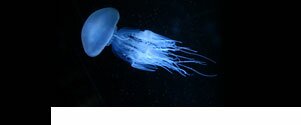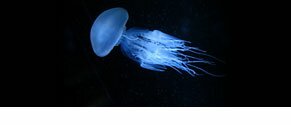What Do Jellyfish Eat
Jellyfish are an especially interesting part of marine life in many ecosystems, and one common question experts get is, “What do jellyfish eat?” Let’s start by talking about the very basics of this kind of marine creature. Jellyfish are not actually fish, and some people prefer to call them jellies because of it. They’re found in every ocean at all depths, and some varieties are even found in freshwater lakes. Jellyfish usually only a year or two, but the larger ones can live anywhere from five to 10 years.
Jellyfish generally spend their days floating around among the currents, grabbing whatever food they grab with their tentacles. The tentacles are used to sting prey and bring it closer to the jellyfish so it can consume it. Besides drifting among the currents, jellyfish may also propel themselves by tightening and then contracting their bell, which is the main section where all the tentacles attach.
Since jellyfish do not have actual digestive system, they digest food by absorbing nutrients through the lining of their gastrovascular cavity. The jellyfish consumes food through the same opening as it releases waste. This makes the question “What do jellyfish eat?” especially interesting. You might expect that not having a digestive system would lend itself to eating plants, but the jellyfish is actually a carnivorous creature. They usually eat zooplankton, comb jellies and even other jellyfish. Large varieties of jellyfish can consume larger crustaceans and other marine creatures.
Many jellyfish are simply passive hunters that eat whatever food happens to get close enough for them to grab. However, some are very aggressive hunters that eat small fish. Other varieties of jellyfish are known as filter feeders. This is because the question “What do jellyfish eat?” can be answered as simply as, “water.” Filter feeders take in the water around them and absorb the nutrients from anything that’s in the water. Having too many filter feeders can wreak havoc on an ecosystem because they tend to consume just about anything, including the eggs and larvae of shrimp and oysters. Filter feeders may also devour so many zooplankton that they throw the balance of the ecosystem off-kilter.
The jellyfish can be extremely harmful to humans. Some varieties of jellyfish have even been known to kill humans. For example, the box jellyfish kills over 60 people per year in Australia, on average. If a jellyfish stings you, it’s important to get the stingers out and treat the poison. The poison from some varieties of jellyfish doesn’t cause any symptoms, although the poison from others can kill you in just three minutes.
Jellyfish can fall prey to a variety of other sea creatures. Those wanting to thin out the number of jellyfish in their area may try to increase the population of the creatures which eat jellyfish. Common jellyfish predators include spadefish, sunfish, and loggerhead turtles. Crabs may also eat smaller jellyfish that can’t eat them. Some people also enjoy eating jellyfish, and they’re considered a delicacy in some cultures.


